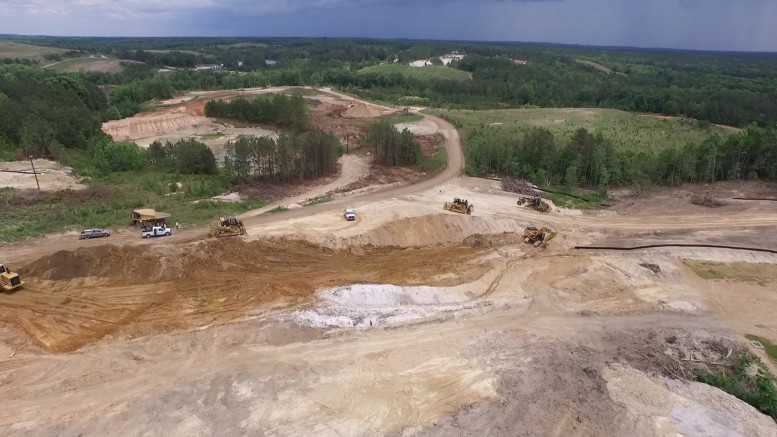In the first week of March, Macquarie Securities analyst Michael Gray visited OceanaGold’s (TSX: OGC) Haile gold project in South Carolina, which the company added to its portfolio last year through the acquisition of Romarco Minerals.
The open-pit mine — 80 km southeast of Charlotte — is in construction, and the company expects to put the first ore through the mill by year-end, with commercial production targeted in early 2017. But Gray envisions underground potential, and he is naming the company his top pick amongst intermediate producers, and raising the target price on the stock 5% to $5.50 per share.
“Haile underground is clearly going to happen … and this adds a 15¢ net asset value per share and drives our target increase,” the mining analyst wrote in a March 31 research note.
“Management was cautious on details, as an underground PEA is pending in the second quarter of 2016,” he said. “However, it is clear that a 100,000 oz. gold per year contribution from underground is the goal.”
Gray has added an underground operation to his model for Haile, starting in 2018, with a mine capex of $70 million to 90 million and production of 100,000 oz. gold a year over four years from the Horseshoe and Palomino zones, at a 4.5-gram gold grade per tonne. (The Horseshoe zone was discovered in early 2010 and Palomino in 2010–11.)

OceanaGold’s Haile gold project under construction in South Carolina is expected to start production in early 2017. Credit: OceanaGold
The mining analyst notes that on the conference call last year announcing the agreement with Romarco, OceanaGold’s CEO Mick Wilkes pointed to the potential of incorporating an underground mine at Haile “sooner than later.”
Gray writes that “this was a key theme for us, as it would have been a key component of OceanaGold’s due diligence and likely a driver of the transaction,” adding that it is a “similar dynamic” to what OceanaGold is doing at its open-pit Didipio mine in the Philippines, where it is developing an underground mine.
There was good news at Didipio as well, where the government’s Mines and Geosciences Bureau has granted the company a five-year extension to its exploration permit, which gives OceanaGold the right to explore the region surrounding the mine site. It is now reviewing and prioritizing targets.
The permit covers 158 sq. km in the provinces of Nueva Vizcaya and Quirino, where geochemical sampling has identified several gold and copper soil anomalies near Didipio.
“There has been virtually no movement on most of OceanaGold’s permit applications in the Philippines for several years, so we see this as a positive sign and could lead to organic growth in country,” CIBC analyst Jeff Killeen said in a research note.
Brian Quast of BMO Capital Markets added that “the probability of discovery is high and could act as a catalyst for the stock.”

Processing equipment at OceanaGold’s Didipio gold mine in the Philippines. Credit: OceanaGold
The company expects to spend $30 million on exploration in 2016, across its asset portfolio. Of that, $10 million will be spent on Waihi. (Recent intersections at Waihi include 3.5 metres of 9.83 grams gold per tonne and 7.8 metres of 6.25 grams gold per tonne.)
OceanaGold’s production guidance this year is 385,000 to 425,000 oz. gold from its operations at Didipio and in New Zealand, where it operates the country’s largest gold mine at the Macraes Goldfield, which holds open-pit mines and the Frasers underground mine.
Copper production this year at Didipio is expected to reach 19,000 to 21,000 tonnes.
All-in sustaining costs for 2016 are an anticipated US$700 per oz.
At 15% production growth, Macquarie’s Gray writes, OceanaGold “has one of the best three-year compound annual growth rates in our coverage universe.”
In other news, OceanaGold recently raised its stake in Gold Standard Ventures (NYSE-MKT: GSV) from 15.2% to 19.9%. Gold Standard is a junior exploration company exploring in Nevada’s Carlin trend.


Be the first to comment on "OceanaGold Macquarie’s top intermediate producer"